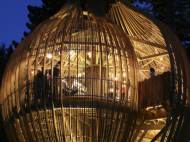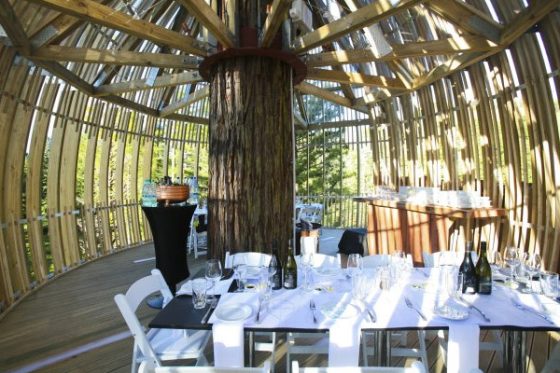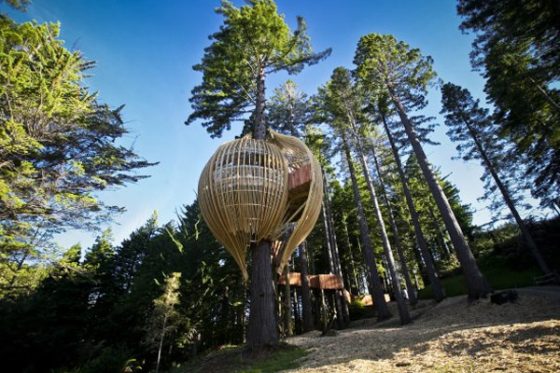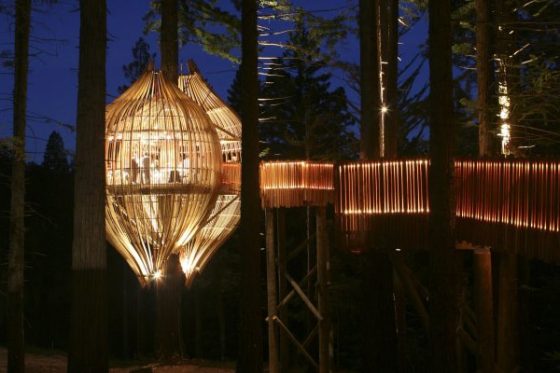A “green” architecture – Yellow Treehouse Restaurant
 You might wonder why we chose to write about an architecture which is not green. It is an example of a great idea done wrong in several aspects. Although it looks astonishing, its functionality and the solutions made in the build are classic examples of architecture which needs to be criticized. The Yellow Treehouse Restaurant was built for a reality TV show in New Zealand. The concept behind the show was that everything used to build this Treehouse Restaurant had to be acquired by using the New Zealand Yellow Pages. They conducted a marketing promotion to show that no matter what your project is, the Yellow Pages can help you complete it.
You might wonder why we chose to write about an architecture which is not green. It is an example of a great idea done wrong in several aspects. Although it looks astonishing, its functionality and the solutions made in the build are classic examples of architecture which needs to be criticized. The Yellow Treehouse Restaurant was built for a reality TV show in New Zealand. The concept behind the show was that everything used to build this Treehouse Restaurant had to be acquired by using the New Zealand Yellow Pages. They conducted a marketing promotion to show that no matter what your project is, the Yellow Pages can help you complete it.
The selected site and tree had to meet a myriad of functional requirements -18 seated people and waiting staff in relative comfort complete with a bar. One of the larger trees on the site, which sits above a steep part of the site which accentuates the tree’s height, was selected for building site. The restaurant design was done by Pacific Environments Architects, and it is constructed on a site north of Auckland.
The concept is driven by the “enchanted” site which is raised above an open meadow and meandering stream on the edge of the woods. The tree-house concept is reminiscent of childhood dreams and playtime, fairy stories of enchantment and imagination. The access to the dining area of the restaurant built 10 meters up a redwood tree is realized through a 60m tree-top ‘accessible’ walkway. Kitchen and catering facilities, as well as the toilets are located at the ground level.
The Architectural component embodies a simple oval form wrapped “organically” around the trunk and structurally tied at top and bottom, with a circular plan that is split apart on the axis with the rear floor portion raised. This allows the approach from the rear via a playful tree-top walkway experience, slipping inside the exposed face of the pod and being enchanted by the juxtaposition of being in an enclosed space that is also quite ‘open’ and permeable to the treetop views.
The scale and form of the tree-house creates a memorable statement without dominating its setting, because the chosen organic materials mostly blend into the surroundings. It is designed to be weather resistant using acrylic sheeting fixed to the roof under the fins with vertical roll-down café-style blinds within. Lighting is an important architectural component enhancing and changing the mood, with discreet lighting within the walkway and up-lighting within the tree house. A team of consultants working alongside the architects includes fire and structural engineers, town planners and arborists to meet functional and Building Code requirements.
So how “green” the project really is? The glulam beams are often a great, renewable choice for green building with less waste and a smaller carbon footprint than steel or concrete. Aside the materials used for the build, there are is no other sustainability. The other facilities aren’t sustainable at all. Although built in greens, this is clearly not an example of green architecture.
Building such a project without any promising long-term functionality besides the advertisement for the company (which already uses too many resources on printing their directories) is an unsuccessful attempt of their company to act green. However, it will inspire new projects, which are built with even better materials, more care toward the tree itself and more functionality (regarding the location and the operation of the facility). You can’t deny you wouldn’t visit a similar restaurant located in a park located at the centre of your city.












Leave your response!